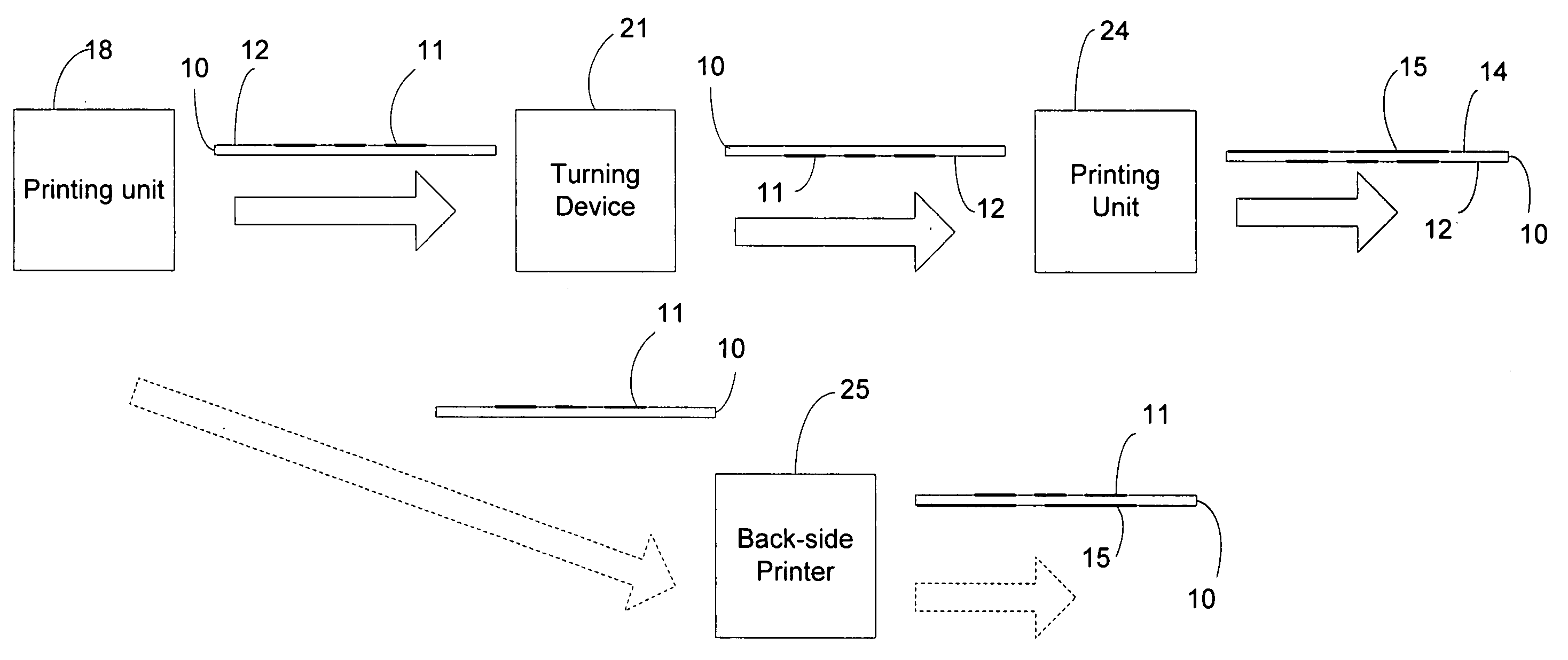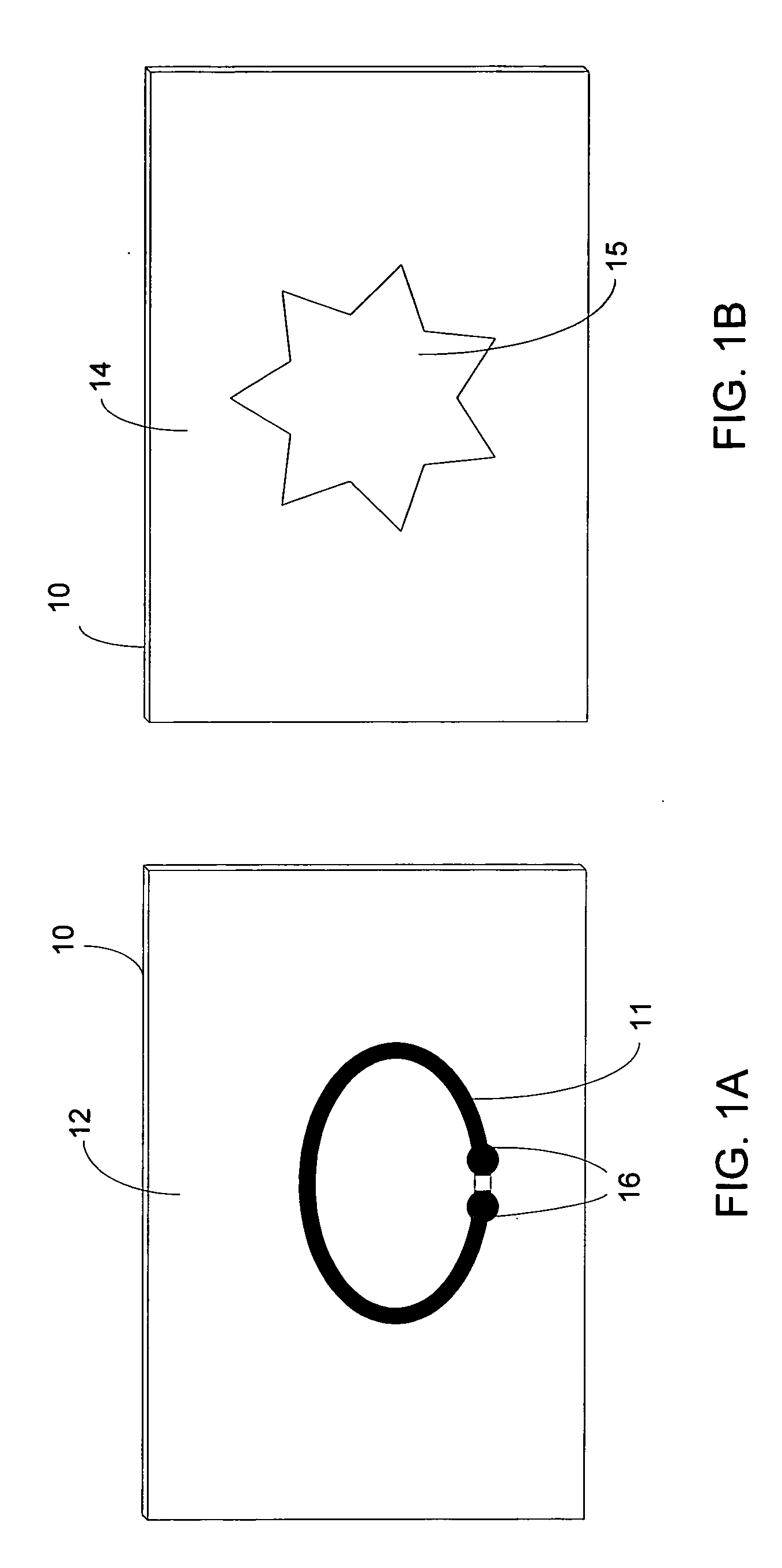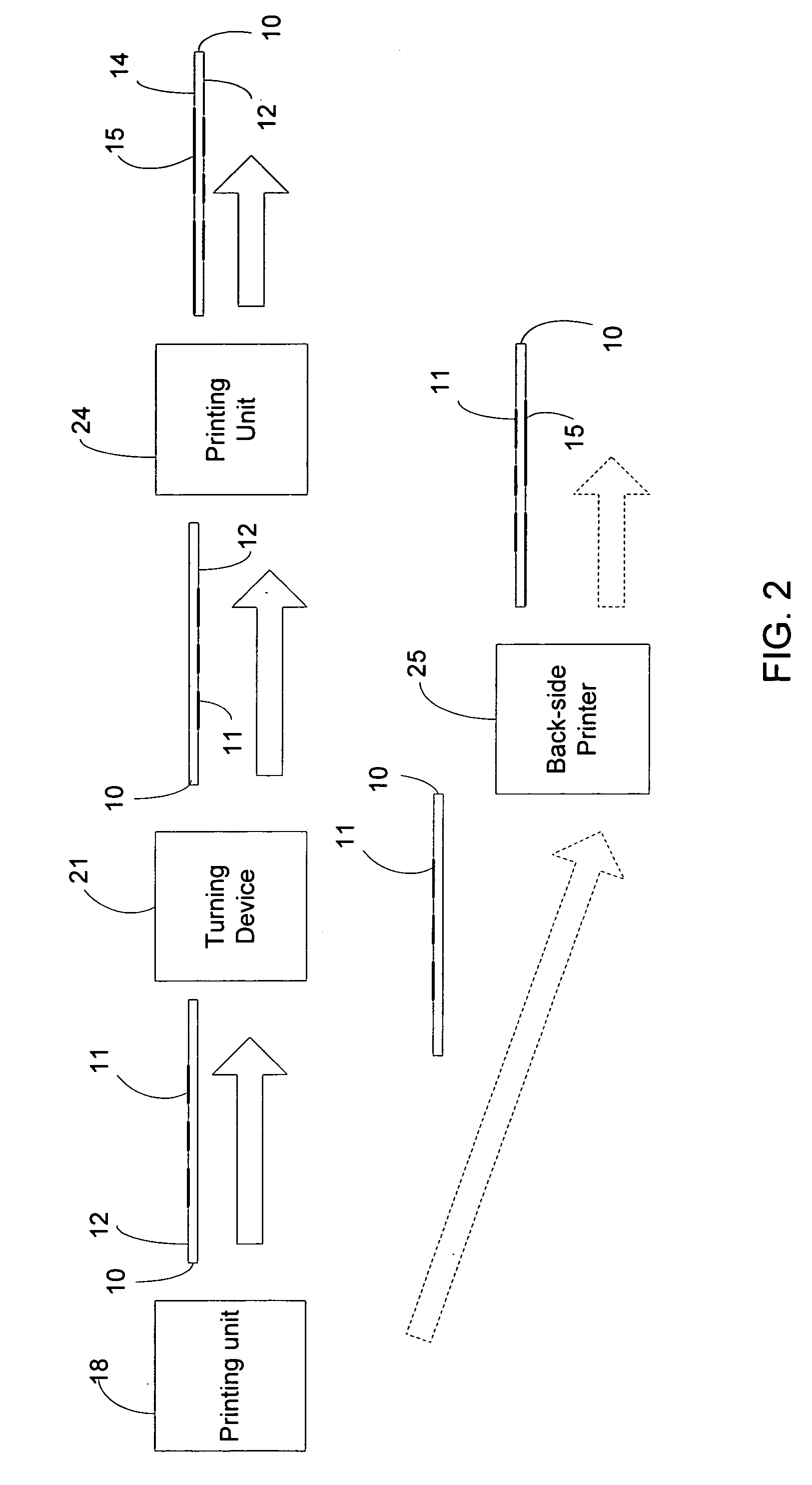Method for printing an electronic circuit component on a substrate using a printing machine
a technology of electronic circuits and printing machines, applied in the direction of conductive pattern formation, lithography, instruments, etc., can solve the problems of easy destruction or removal of rfid tags printed on the exterior of packages, discoloration of printing substrates, and interference with the desired visual design of printed packages
- Summary
- Abstract
- Description
- Claims
- Application Information
AI Technical Summary
Benefits of technology
Problems solved by technology
Method used
Image
Examples
Embodiment Construction
[0012]FIGS. 1A and 1B show a highly simplified example of a sheet-like substrate 10 that has a conductive structure printed thereon to form a component 11 of an electronic circuit. The component 11 may be, for example, an coil that serves as the antenna for an RFID circuit. For such an application, the ends of the coil may have contact patches 16 for attaching to a RFID chip. The component 11 is printed on one side, such as the backside 12, of the printed substrate 10, while the opposite side of the substrate, in this example the front side 14, has a design or pattern 15, such as decorative motif, printed thereon.
[0013] According to the invention, the problem of the prior art described earlier is solved by printing parts of the circuit on the inner side of the package (front printing side or back side of the sheet of the printing substrate using the S & W method). As shown in FIG. 2, the circuit part or component 11 is printed using one printing unit 18 of the printing system 20. T...
PUM
 Login to View More
Login to View More Abstract
Description
Claims
Application Information
 Login to View More
Login to View More - R&D
- Intellectual Property
- Life Sciences
- Materials
- Tech Scout
- Unparalleled Data Quality
- Higher Quality Content
- 60% Fewer Hallucinations
Browse by: Latest US Patents, China's latest patents, Technical Efficacy Thesaurus, Application Domain, Technology Topic, Popular Technical Reports.
© 2025 PatSnap. All rights reserved.Legal|Privacy policy|Modern Slavery Act Transparency Statement|Sitemap|About US| Contact US: help@patsnap.com



